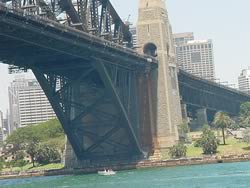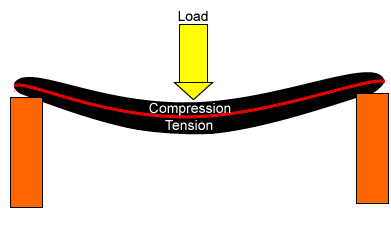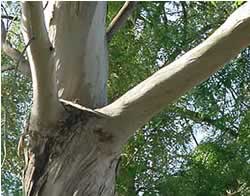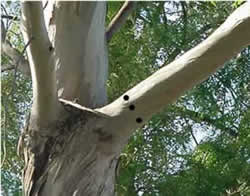Tension and compression


Consider a steel beam supported at both ends and carrying a load in the middle as shown on the left. As the beam bends two regions are created along its length. The region on the top of the beam is under compression. In this region atoms are been squashed together. The region at the bottom is under tension. In this region the atoms are being pulled apart and the surface of the beam is being stretched.
If a heavy load is placed at the end of the branch shown on the right, it will snap and fall to the ground. It will start to fail at an area where tension is taking place.
Locate the area of tension and compression on the branch shown on the right.

A student wants to attach a swing to the branch of a tree. Three marks a made on the branch where a hole should be drilled to insert the rope.
Through which mark should the hole be drilled so as not to weaken the branch?
Solution
